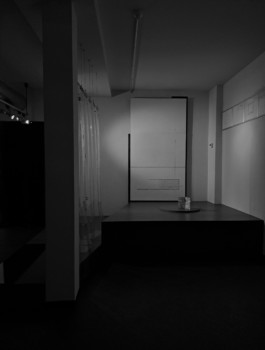
CYCLE OF HISTORY. ET CETERA._____ 17.08.2023 – 27.08.2023
Palais Lichtenstein, Lichtenstein/Sa., DE
Artists draw upon symbols and imagery that borrow forms from the past, layered through the strata of history. Their visual language engages with the iconographic tradition. Not as mere reference, but as a living system of signs capable of transcending time. Through this system, they seek to establish a dialogue with the future, one that reveals the cyclical structure of world events and our place within them.
The project reflects on the tragedy of timelessness: a condition that humanity encounters not for the first time, but with renewed intensity. Both artists trace, in their works, the residual suffocation inflicted by the socio-political machine. A force that compels us to normalize suffering, until pain itself is stripped of its meaning and becomes routine. This condition, in which violence becomes ambient, is the quiet catastrophe of the modern age.
Yet within this repetition lies a paradoxical potential. Perhaps the recognition of the cycle is the first step toward its rupture. To become aware of repetition is not merely to name it, but to confront its logic. To interrupt its rhythm. This is where art becomes an act of resistance: not through didacticism, but through form, through the unsettling reconfiguration of the visible.
By exposing the fault lines beneath inherited images, the artists attempt to open a space where meaning can still be contested. In the folds of historical trauma, they search for a gesture that is not merely symbolic, but transformative. Not an escape from history, but a reckoning with it, one that refuses to resign itself to the inevitability of return.
Curated by curatorial team of Palais Lichtenstein
Text by Sofiia Yesakova
Group exhibition


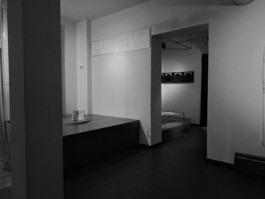
Site-specific installation, part of a series of works Cargo 200. Experimental projections on surfaces. Installation view
A transparent curtain fastened with screws serves as a metaphor for the illusion of informational freedom. At first glance, it suggests openness, accessibility, and freedom of choice. Yet upon closer examination, it reveals the opposite: a barrier that permits seeing but not touching, perceiving but not verifying. The transparency is deceptive. It conceals as much as it reveals. In this sense, the installation reflects the mechanisms of information control: selective reporting, curated narratives, and biased materials that shape public perception and gradually influence individual identity. We live in an era defined by the illusion of informational abundance. But access does not equal understanding. Even security, once a foundational promise, now appears as another illusion.
The artist juxtaposes this with a clinical, emotionless graphic element, a chart. At first, it reads like an abstract data visualization. But upon closer inspection, the viewer notices the label “Cargo-200” and the outlines of coffins viewed from above. This transforms the neutral graph into a visual record of death, a dry enumeration of loss. The bureaucratic language of numbers replaces empathy; the human cost is reduced to metrics. The installation points to how mass death has become banal, processed as data, consumed without grief.
This visual language of the installation also references the architectural precision of concentration camp layouts: clean, rational, and disturbingly orderly. Such documents often appear too sterile to align with the atrocities they supported. And yet, they are part of our shared history, proof of what structured systems are capable of doing to human beings. The work suggests that what we fear is not always aligned with what is truly terrifying. Horror often hides behind rational forms, in spaces where emotion is absent and everything is measurable.
Text by Sofiia Yesakova
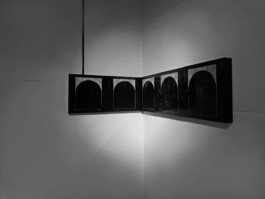
Blind Spot. 1.1-1.8., 40 × 40 × 4 cm ( × 8 ), Acrylic, gelatin, gesso, lacquer and wooden boards, 2024
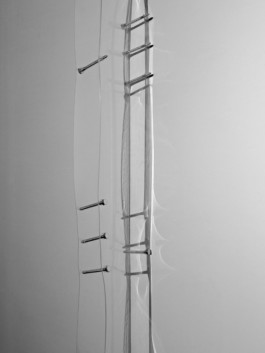
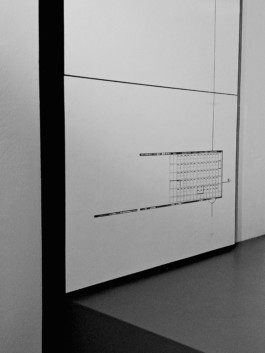
Site-specific installation, part of a series of works Cargo 200. Experimental projections on surfaces. Close-up